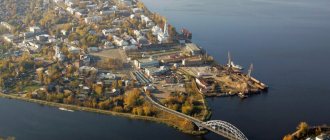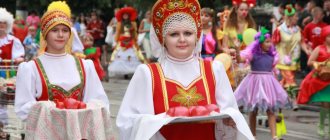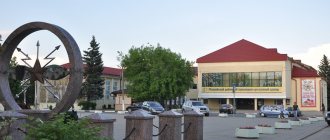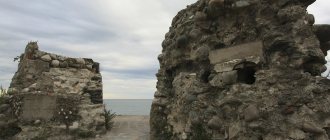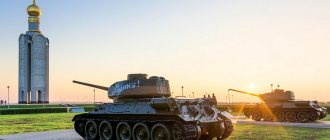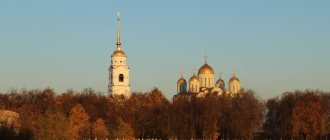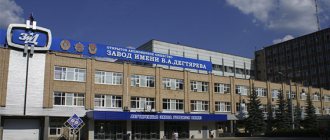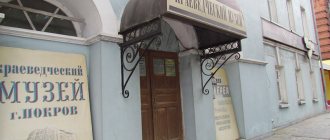Excursion from Kazan to another city | Apartments in Russia| TOURS to Kazan
|
Cruises along the Kama (to Chistopol)
Chistopol is a real provincial pearl, almost untouched by urban development and civilization in general (in the worst sense). You should definitely come here if you are traveling around Tatarstan: ancient merchant estates and the Pasternak Museum await you. I tell you how to get to Chistopol at the end of the article.
Sights of Chistopol
All the sights of Chistopol are located compactly on Lenin and Marx streets: ancient mansions and museums, numerous public gardens, the entire promenade ends at the Kama embankment.
We started our walk from the bus station (read below for how to get to Chistopol).
And the first thing you can see in the city is the water tower building. I hope that soon the spontaneous market around it will be cultivated and it will look more presentable.
The Kazan-Bogoroditskaya Church was built in Chistopol in the mid-nineteenth century with the money of the merchant Ivan Ivanovich Kalinin.
Chistopol is very provincial (in the good sense of the word), here you can feel a careful attitude towards history and the city. Lots of squares.
Shashina Estate: as part of the reconstruction, a hotel for tourists will be located here.
In the central park of Chistopol there is a monument to Boris Pasternak, who lived here in evacuation for two years: he translated Shakespeare, collected materials for Doctor Zhivago, but more on that later.
Residential building of a police officer. The first floor is brick, the second is wooden, with a preserved cast-iron balcony.
Download route maps for the cities of Tatarstan and Kazan
But in this eclectic style mansion, an example of residential development of the late nineteenth century
in 1990, the first (!) Boris Pasternak Museum in Russia opened.
We go into the courtyard and see two entrances.
The first one - with a memorial plaque - served as the entrance to the museum for 22 years. This is a separate entrance to the Vavilovs’ apartment, where Boris Pasternak lived in evacuation from 1941 to 1943.
TOURS to Kazan
Only eight years ago the museum managed to move into a communal apartment for three residents and expand the exhibition. In this part of the house there are typological objects of that time, photographs, reproductions, books that tell about Pasternak’s life in chronological order. Since childhood, in his parents’ house, he moved among writers, musicians, and artists: his mother was a famous pianist, his father was an artist. Thus, the exhibition presents illustrations by Leonid Pasternak for the novel “Resurrection”: he was friends with Tolstoy, this is a lifetime edition of the novel.
And then - the memorial part of the house - the two-room apartment of the Vavilovs - where Pasternak rented a room.
Pasternak had very good conditions (compared to those in which Marina Tsvetaeva lived in Yelabuga ): he lived alone in his room, and his wife lived and worked in a boarding school for the children of writers, so that the children would be with her and receive regular three meals a day. The Writers' Union then provided only one meal a day; the rest had to be earned.
Pasternak came to the boarding school and helped, because there were not enough male hands. Pasternak was mainly involved in translations of Shakespeare. This was a government order: relations with Great Britain were being established. These transfers fed Boris Leonidovich: he paid for the apartment with this money.
The memorial part contains a maximum of original items. The writer's personal belongings: coat, felt boots,
an inkwell and a glass holder under the hood, books in the closet.
At this time he began collecting materials for Doctor Zhivago. The owner of the apartment, Vasily Andreevich Vavilov, was a participant in the civil war, he willingly shared his memories - eyewitness accounts were very valuable.
The town... copied from Chistopol, all the Tatar names that appear in the book are taken from here. And one of the prototypes of Zhivago is the Chistopol doctor Dmitry Dmitrievich Avdeev.
House of D.D. We will see Avdeev (the former house of the merchant P.E. Chukashev) while walking around the city. Apparently, it is also awaiting restoration. The color of the evacuation gathered here: they read poetry and talked about literature. According to the memoirs of Boris Pasternak’s wife, sometimes it even seemed to her that this was not Chistopol, but Moscow.
If it weren’t for the memorial plaque, they would hardly have paid attention.
Even the title of the novel was suggested by a letter from Avdeev to Pasternak, in which he signed himself “Doctor Avdeev.”
In the master's room there are two portraits of Pasternak. One of them was written during the war by the son of Dr. Avdeev, Pasternak’s friend Valery Dmitrievich Avdeev.
He also photographed Pasternak before leaving in his room with a border of swallows. A modern Chistopol artist painted a portrait of Pasternak based on this photograph.
In general, an amazing museum that will not leave you indifferent. We go out and continue walking around the city.
And the poet Nikolai Aseev lived in this house during the evacuation.
Merchant mansions and entire estates have been preserved in Chistopol; no high-rise buildings have spoiled the historical center.
And here is the tea and sugar shop of merchant A.N. Maklakov of the mid-nineteenth century. If only I could unsee this creepy modern sign...
And half a block away is Lenin Square, like something from Soviet times.
Teacher's House (former pharmacy of K.F. Kovalevsky, built in the eclectic style in the 19th century). Here during the days of evacuation 1941-1943. there was a branch of the Union of Soviet Writers. Evenings were held here where all the writers mentioned in this article spoke. Here Marina Petrov and Lev Oshanin were accepted into the Writers' Union. Now the building houses a literary and memorial museum, which is called the Teacher’s House. According to Boris Pasternak, nowhere except Chistopol did writers live so friendly and united..."
Opposite the Teacher's House is the building of a former gymnasium.
And next to it is the house in which Leonid Leonov and Ilya Selvinsky lived with their families during the evacuation; there will also be a museum here.
We continue to admire the provincial merchant mansions. It is planned to house another historical museum at the Chukashev estate.
The Chistopol Local History Museum is located in the estate of the merchant Poduruev (it is called the Museum of the History of the City). The architecture of the building displays Empire and Baroque features.
Download route maps for the cities of Tatarstan and Kazan
From the museum there are literally a few steps to St. Nicholas Cathedral. It was built in 1838 on the high bank of the Kama River, and is one of the most striking examples of classicism architecture in the region.
The cathedral complex includes a chapel in pseudo-Russian style.
The cathedral has been restored, the wall paintings have been restored (frescoes by the artist Pomerantsev), which we were not able to verify, since it was closed! It's a shame.
Kama embankment with gazebos, changing rooms (there is also a beach and a promenade) and its own Big Ben.
Beach
The founder of modern organic chemistry, A. Butlerov, was born in Chistopol; a street running parallel to the embankment is named after him, on which the cathedral stands. They are also planning to organize a museum in his house. All these plans to create museums should be completed by 2025. But even now it is a very interesting city.
Also in Chistopol you can go to the brewery, which has a beer museum store where you can go on a tour with tasting. But if you don’t have time for a tour and a visit to the plant, then you can simply go to the local chain of stores “Pivoman”, one of them is located in the center, in the estate of the merchant Myasnikov:
A couple of tens of meters from here is one of the most elegant mansions in the city, which, by the way, also belonged to Myasnikov (but built in the mid-nineteenth century for the merchant Meshkichev). Now it houses the registry office.
Not far from here is the Melnikov mansion, which has an excellent souvenir shop. The mansion itself is a masterpiece of Chistopol Art Nouveau.
Take a plein air look at the desolation of the ancient city
At the exhibition “Ancient Chistopol. Revival” presents more than 60 works created by painters in 14 days. The project became possible thanks to the winning grant from the President of Russia and the support of the Ministry of Culture of Tatarstan. In fact, the goal set by the artists is quite achievable. The prerequisites for the revival of the city appeared two years ago, when Chistopol received support from the Russian Ministry of Culture. The city will be allocated funds under the program for the restoration of small historical towns, which will be implemented until 2025.
Summer is a fertile time for plein air painting. As Albert Shiabiev, chairman of the board of the Union of Artists of Tatarstan, noted at the opening of the exhibition, the painters are now working in Zainsk; the other day the plein air ended in Aksubaevo.
The Chistopol project began on May 3 and lasted two weeks. During this time, more than 20 Russian artists and the same number of republican ones painted old, pre-revolutionary buildings, iconic places and picturesque corners of the city and the Chistopol region. They all took up a brush to paint in the open air the desolation of the ancient city and “tell all of Russia about it. Make sure that ships come to the Chistopol pier, there are tourists in the exhibition halls, and crowds of guests in the museums.”
Why not, because unlike the idea of Ostap Bender, this goal is supported by both public finances and inspired creative people.
As Albert Shiabiev noted, the painters are now working in Zainsk; the other day the plein air ended in Aksubaevo
How to get to Chistopol
It’s easy to get from Kazan to Chistopol by bus: the schedule is very convenient, there are many flights, so the trip will be absolutely comfortable.
If you are driving a personal car, keep in mind that you can see along the way
- Laishevo (Kama Sea and Semruk ),
- Magpie Mountains (Kama Bridge).
In addition to what has been said, there are a lot of picturesque villages and simply beautiful places on the Kama River, where you can taxi along the road.
TOURS to Kazan
What else to read about Tatarstan and Kazan
Route around Tatarstan Kazan in 1 day Kazan in 3 days Kazan City Bus Where to eat deliciously in Kazan Souvenirs from Kazan Where to stay in Kazan Public transport Kazan Elabuga Chistopol Sviyazhsk Bolgar Raifa Monastery Laishevo and the Kama Sea Semruk Verkhniy Uslon and Makaryevsky Monastery
Responsive Chistopol residents and self-discovery
Lana Musina-Medvetskaya first met Chistopol. Her landscape “Courtyard” surprises with its riot of colors and philosophical meaning - a golden-domed church rises above the dilapidated buildings of the old courtyard, as a symbol of life and hope for a bright future or eternal life.
— I had a long break from plein air, for two years I worked only in the studio and began to pay more attention to genre works. Chistopol plein air rediscovered me for myself. The work is emotional, fast, when you paint not with your head, but with your heart, it gives you more freedom, and accordingly, the pictures turn out different, more alive. In addition, I personally met artists whose work I knew. “I will definitely come to Chistopol, and more than once,” said the artist.
She also noted the direct interest of residents in the artists working on the streets. You can see how much they love the city and are proud of it. According to Lana Musina-Medvetskaya, Chistopol residents were happy to tell the history of different places, volunteered to take painters to colorful corners of the city, and suggested plots. Her words were confirmed by Albert Shiabiev: “For the residents of the city, the plein air has become a great cultural event.”
Lana Musina-Medvetskaya: “The Chistopol plein air rediscovered me for myself. The work is emotional, fast, when you paint not with your head, but with your heart, it gives you more freedom, and accordingly, the pictures turn out different, more alive.”

